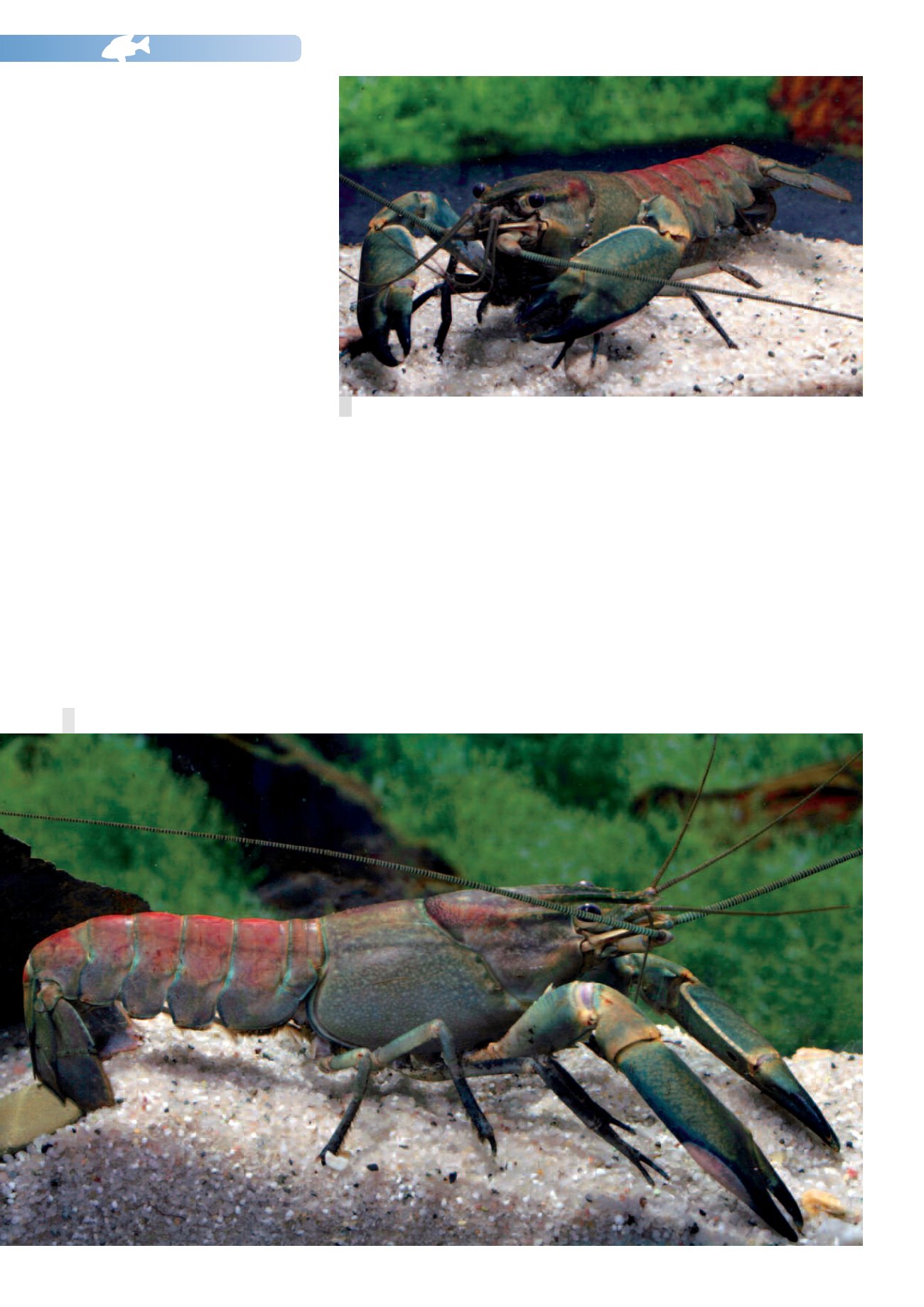
NEWS106
46
Cherax
sp.„Rusty“
The rusty redcolorationof theabdomenof
Cherax
sp.“Rusty”canbe seenparticularlywell in thisphoto.
theyoccurexclusively in the southernhalfof
the island,which isdivided inhalf practically
lengthwisebyamountainchain (theMaoke,
Bismarck, and Owen Stanley mountains).
While thedistributioncanapparentlybeex-
plainedby thegeographical barrier that this
mountainchainrepresents,it isdifficulttoun-
derstandwhytodatenoCheraxspecieshave
been found inthesouth-westofNewGuinea.
Evidenceof the iceage
Some of the
Cherax
fromNewGuinea are
conspecificwith those fromAustralia, and
Cherax
arealso foundon the islandsofAru
andMisool,which liebetweenNewGuinea
andAustralia. Some freshwater fishes also
havea similardistribution, for example the
rainbowfishes popular in the aquarium
hobby.Thisdemonstrates that theprocess
of speciation sometimes takes place only
slowly, as the last time there was a land
bridgebetweenNewGuineaandAustralia
wasduringamajor iceage,when somuch
water was tied up in the ice cloaking the
Earth thatsea levelwasagood200m lower
than it is today.The last time thishappened
was around 21,000 years ago, at least the
peakof the last ice age is estimated as ha-
vingoccurredaround then.
Two subgenera
The
Cherax
speciesaredivided intotwosub-
generaonthebasisofaneasilyrecognizable
external characteristic.The species inwhich
maleshavesoft,colorfulvesicles,withoutcal-
ciumcarbonate inlays,on theouter anterior
surfaceof theclawsareassigned to thesub-
genus
Astaconephrops
, and the rest to the
nominate subgenus
Cherax
.The newly im-
portedcrayfishclearlybelongstothesubge-
nus
Astaconephrops
,whichmeans that the
sexes canalsobe readilydifferentiated:na-
melyonlymalespossessthe- inthiscasede-
licateorange topink–clawvesicles.But the
sexes can readilybe toldapart inanycase if
the underside of the cray is examined.The
malesexualopening isatthebaseofthe last


